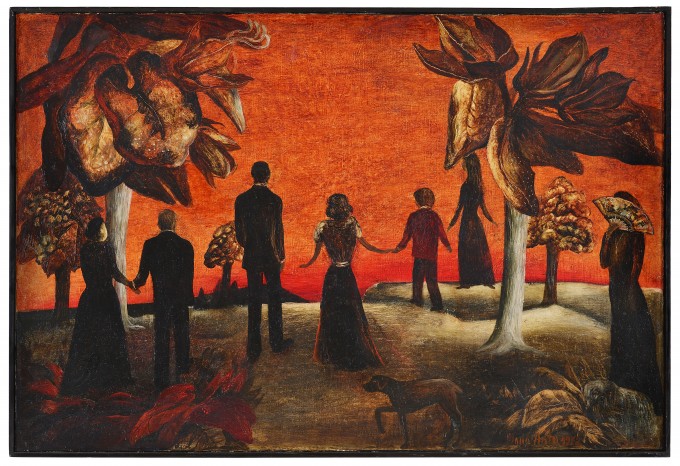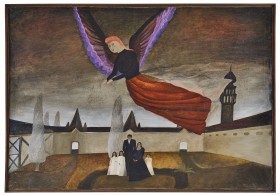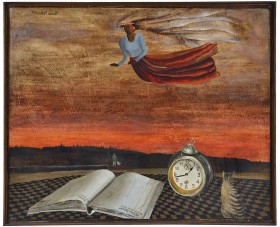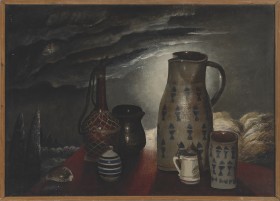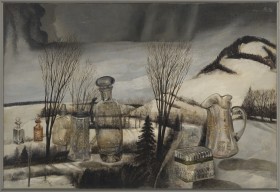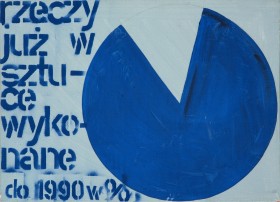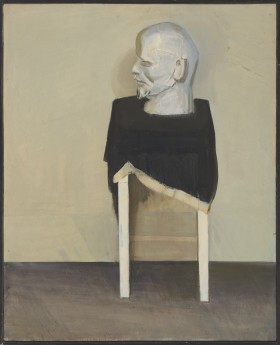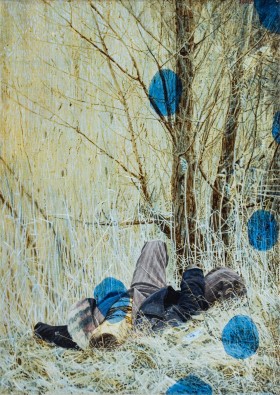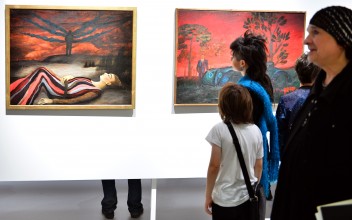Evening Walk
- type of object: painting
- date: 1972
- material/technique: oil on canvas
- dimensions: 80 x 120 cm
- inventory No.: M-2
In the Evening Walk, several figures walk through an indefinite space – a park or garden – towards the setting sun. They are turned with their backs towards the viewer; only the woman near the right-hand side edge of the canvas is portrayed en face – yet she remains invisible as well, her face hidden behind a fan. These are the living and deceased members of the painter's family. Their elegant clothes – suits and long dresses – look like they are not from the modern times. Two of the trees that surround the walkers stand out for their fantastic leaves, which look like magnified versions of some exotic house plants.
The artist herself gave the following explanation for her device of showing people turned with their backs to the viewer: “… that’s ME turned with my back towards the viewer. I’m looking at the same world that the viewer is seeing. The painted figure wants to show something to the viewer… What is deep within is more important.” In Anto’s paintings, figuration is shrouded in an aura of surrealism. The motifs on her canvases tell a story, but hardly ever can they be deciphered. The viewer is confronted with a mystery, with references to themes from the artist’s life woven together along with her memories and dreams. Andrzej Osęka, an art critic, wrote that this method involved leaving things “both revealed and concealed, in order to talk about the world of one’s own personal experiences.” Whitney Chadwick, an American art historian who emphasised the uniqueness of the language of Surrealism as used by women artists, argued that while the paintings of men pictured hallucinations and erotic violence, women created a world infused with fairy-tale atmosphere and fantasy. She did not work on Anto’s art, but the Polish artist could potentially be included in the group of women artists that she described.
Ewa Skolimowska
